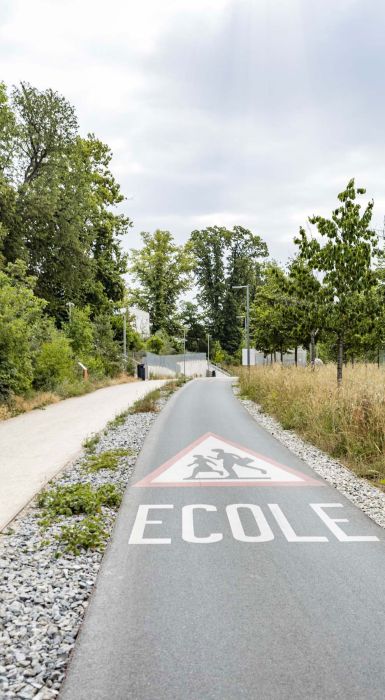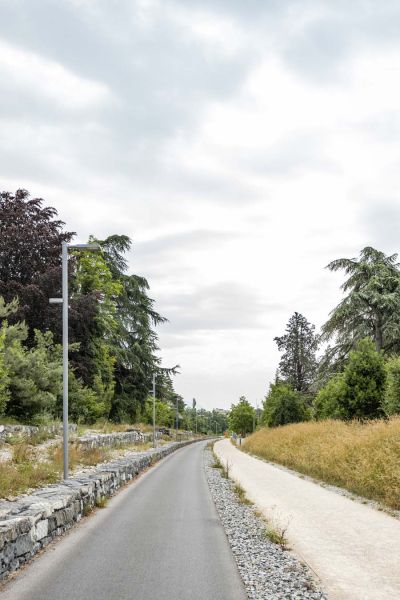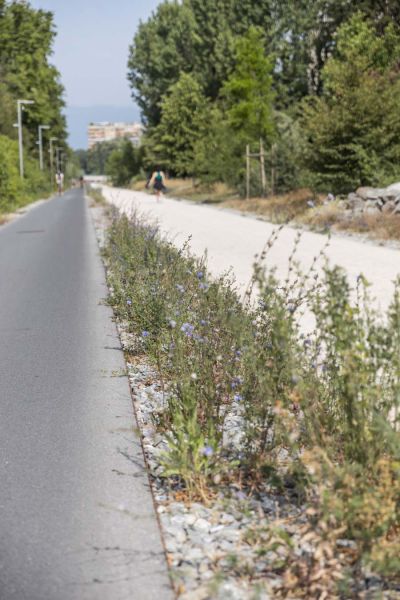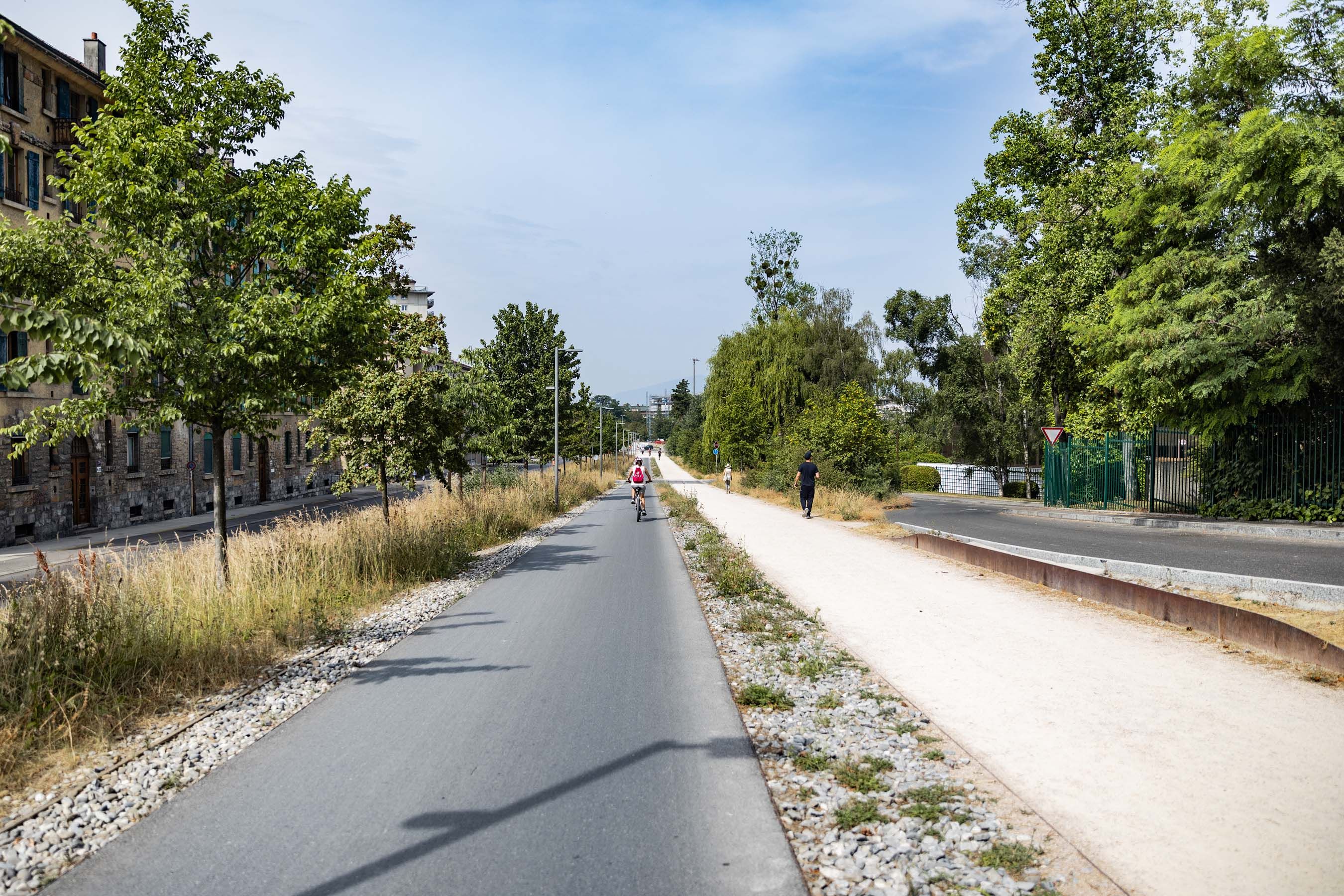Voie Verte CEVA
A landscaping project for soft mobility and environmental enhancement
Project name: CEVA Greenway
Location: Canton of Geneva
Type of project: Public space
Project start date: 2009
Delivery date: 2019
Surface of the AMEX project: Linear of 3.5 km
SIA stages: 31 to 53
Partner offices: MSV Architectes I AJS Civil Engineers
A cross-border project between France and Switzerland, the CEVA Greenway has a major impact on the territory. Combining an axis of soft mobility, public spaces and natural ecosystems, the Greenway is a framework for large-scale experimentation, with significant landscape and ecological issues.
On the Swiss side, this cantonal project crosses 5 municipalities over nearly 3.5 km. ARFOLIA won the call for tenders in 2009 for the exterior landscaping of the green surfaces and environments that make up the Voie Verte. After 10 years of landscaping studies and several planting campaigns, the project was delivered in 2019.

Transforming an underground railway path into a soft mobility path
The opportunity offered by the undergrounding of the railway allows on the surface the release and enhancement of spaces intended for soft mobility and the reconstitution of new surfaces with high environmental value.
Cyclists, pedestrians and plants coexist on a thin ribbon, varying from 15 m to 50 m wide. The asphalt cycle path is separated from the pedestrian area by a draining material to collect surface water. The areas on the periphery, benefiting from a sufficient supply of soil, are dedicated to the reconstitution of specific environmental environments and the replanting of tree strata.
The objective is to restore the natural environments from before the works in certain places, and to create new ones. We mapped the different areas along the entire route and selected the species according to the project we wanted to develop. These choices then had to be validated by the various services and actors with a voice in the matter. Co-constructing this project as a multidisciplinary team has enabled real environmental added value.

Rediscover landscape continuity on a large scale
From the border to the Eaux-Vives station, the route of the Voie Verte is very linear. One of the challenges we had identified was to be able to break this linearity by connecting to transversal elements, existing urban parts or marker landscape elements on the scale of the large landscape.
Different specific sectors take place along the Greenway, each with their own plants and substrates. This offers pedestrians and cyclists a variety of landscapes ranging from the very mineral xeric environment, to the humid environment of the banks of the Seymaz, to a structured alignment of trees at the entrance to the Eaux-Vives station.
In addition to the reconstruction of specific biotopes, we have also proposed potential connections with schools, cemeteries and parks along the route. The Greenway then becomes a stakeholder in the public space and connects to the existing urban fabric.
All the subtlety was to preserve a landscape continuity on a large scale while offering breaths punctually.

The importance of light in landscape architecture
Four ecological priority sectors are located along the route. On these areas as on the whole route, light was a key dimension of the project. The choice of public lighting had to be consistent in the different municipalities for aesthetic standardization, but above all be thought out and controlled to take into account the fauna and flora in order to avoid any nighttime nuisances. With oriented LED lighting, color temperature and specific intensity, the external pressure is controlled. The use of presence detectors and twilight sensors limits the intensity to have the least possible discomfort during the night while ensuring the safety of users.

The CEVA Greenway has become a marker of the Geneva cantonal landscape
The Greenway is a marker of the Geneva cantonal landscape which promotes alternative mobility. The difficulty of a project like this is to succeed in creating plants in a very constrained environment. The tunnel with the railway line is immediately below, which forces us to develop, question and have everyone validate specific construction techniques. In some areas, we have activated nature with seeding and planting. In other sectors, we have left the mineral coating free to natural appropriation. In the long term, the vegetation will naturally resume its rights in the places where it is supposed to, and that's the whole point!




